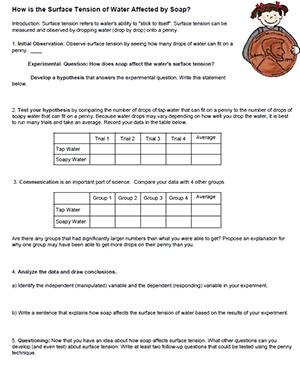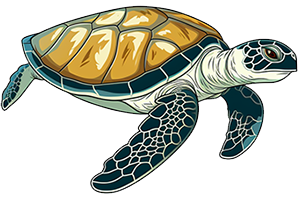
Most science classes begin the year with an exercise on the scientific method. It can be difficult to plan a short activity that will reinforce the main ideas of developing and testing a hypothesis. This lab is simple and doesn’t require much in the way of materials: pennies, water, and pipettes (and paper towels for clean-up).
Each section of the activity correlates to scientific processes. Students develop a hypothesis, gather and analyze data. Then communication their results.
There is a question about independent and dependent variables, which some students may not be familiar with. You can help them with this part by reviewing or explaining those terms.
The final question asks them to pose other questions they might ask about surface tension. They might wonder, for instance, if other substances can affect the surface tension or if temperature has an effect.
If you have enough time, you could have them develop a new experiment to answer those questions. Some students may need guidance here, they are usually not comfortable with posing their own questions, likely because most of their experience involves them answering questions that have been posed *to* them.
I created a version of this lab that focuses on the biological importance of surface tension as it relates to a water strider. It is similar to this one, but includes a short video showing a water strider and asks students to make connections between the animal and water properties.
My AP Biology class does a more advanced version of this activity that includes statistics: “Investigation: Properties of Water with Statistics“
Grade Level: 6-9
Time Required: 15 – 20 minutes

